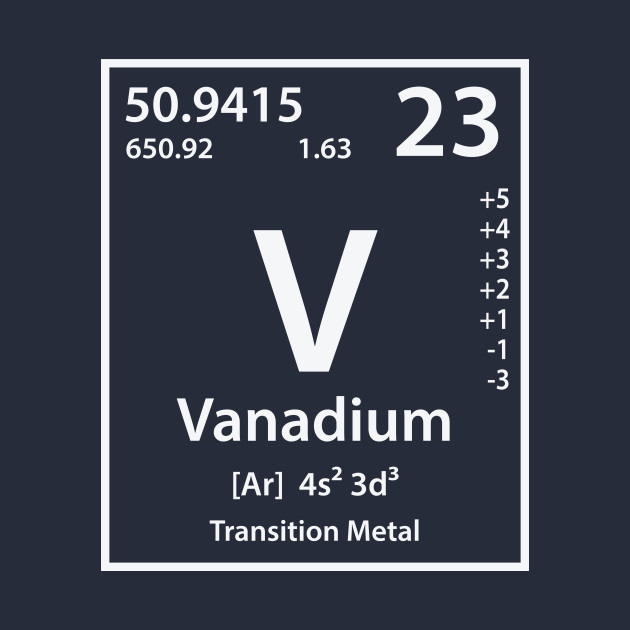
noun Chemistry.
- a rare element occurring in certain minerals and obtained as a light-gray powder with a silvery luster or as a ductile metal: used as an ingredient of steel to toughen it and increase its shock resistance. Symbol: V; atomic weight: 50.942; atomic number: 23; specific gravity: 5.96.
noun
- a toxic silvery-white metallic element occurring chiefly in carnotite and vanadinite and used in steel alloys, high-speed tools, and as a catalyst. Symbol: V; atomic no: 23; atomic wt: 50.9415; valency: 2–5; relative density: 6.11; melting pt: 1910±10°C; boiling pt: 3409°C
rare metallic element, 1833, named 1830 by Swedish chemist Nils Gabriel Sefström (1787-1845), from Old Norse Vanadis, one of the names of the Norse beauty goddess Freyja (see Freya), perhaps because of its colorful compounds.
n. Symbol V
- A soft ductile metallic element, used in rust-resistant high-speed tools, as a carbon stabilizer in some steels, and as a catalyst. Atomic number 23.
V
- A soft, bright-white metallic element that occurs naturally in several minerals. It has good structural strength and is used especially to make strong varieties of steel. Atomic number 23; atomic weight 50.942; melting point 1,890°C; boiling point 3,000°C; specific gravity 6.11; valence 2, 3, 4, 5. See Periodic Table.
 Liberal Dictionary English Dictionary
Liberal Dictionary English Dictionary